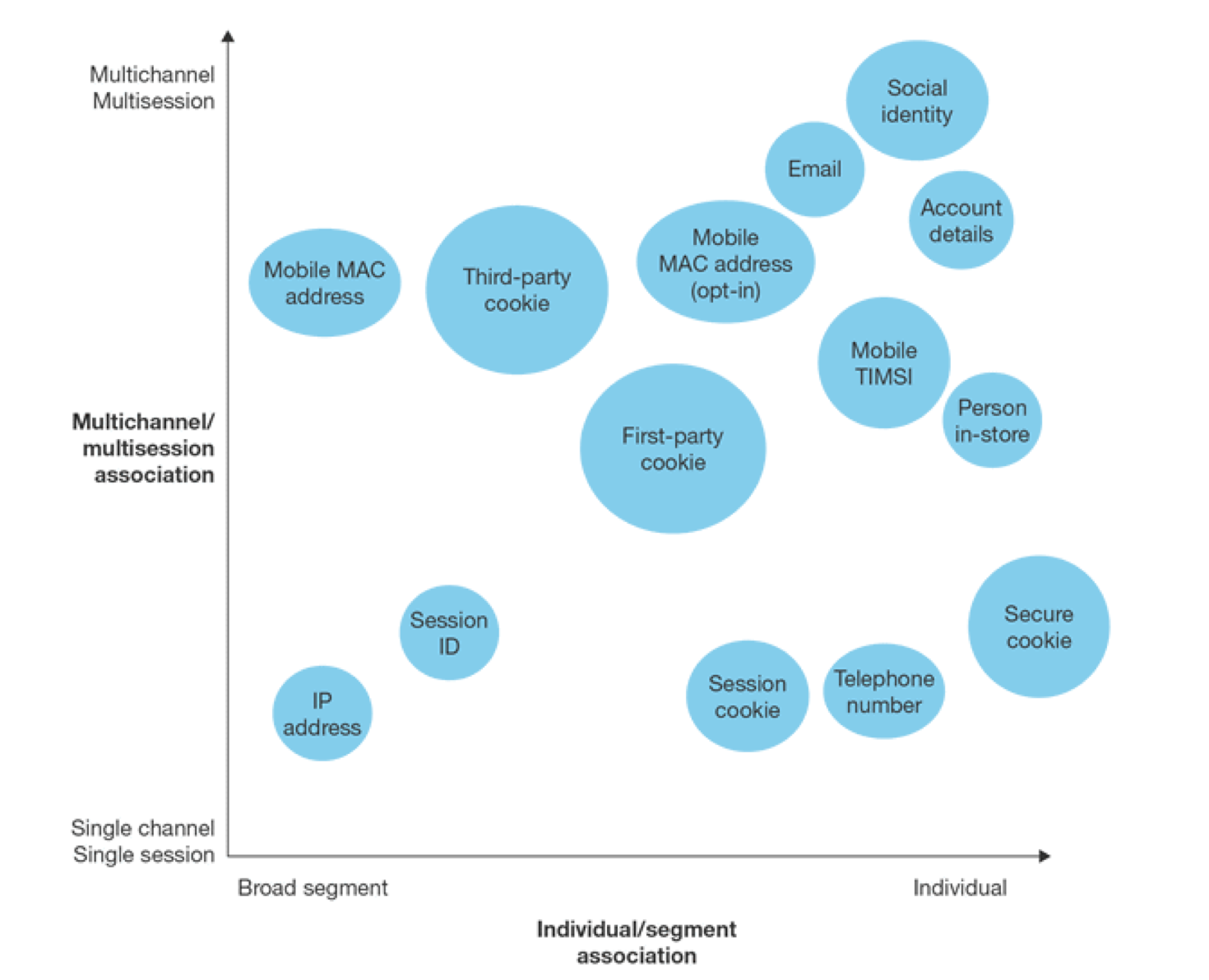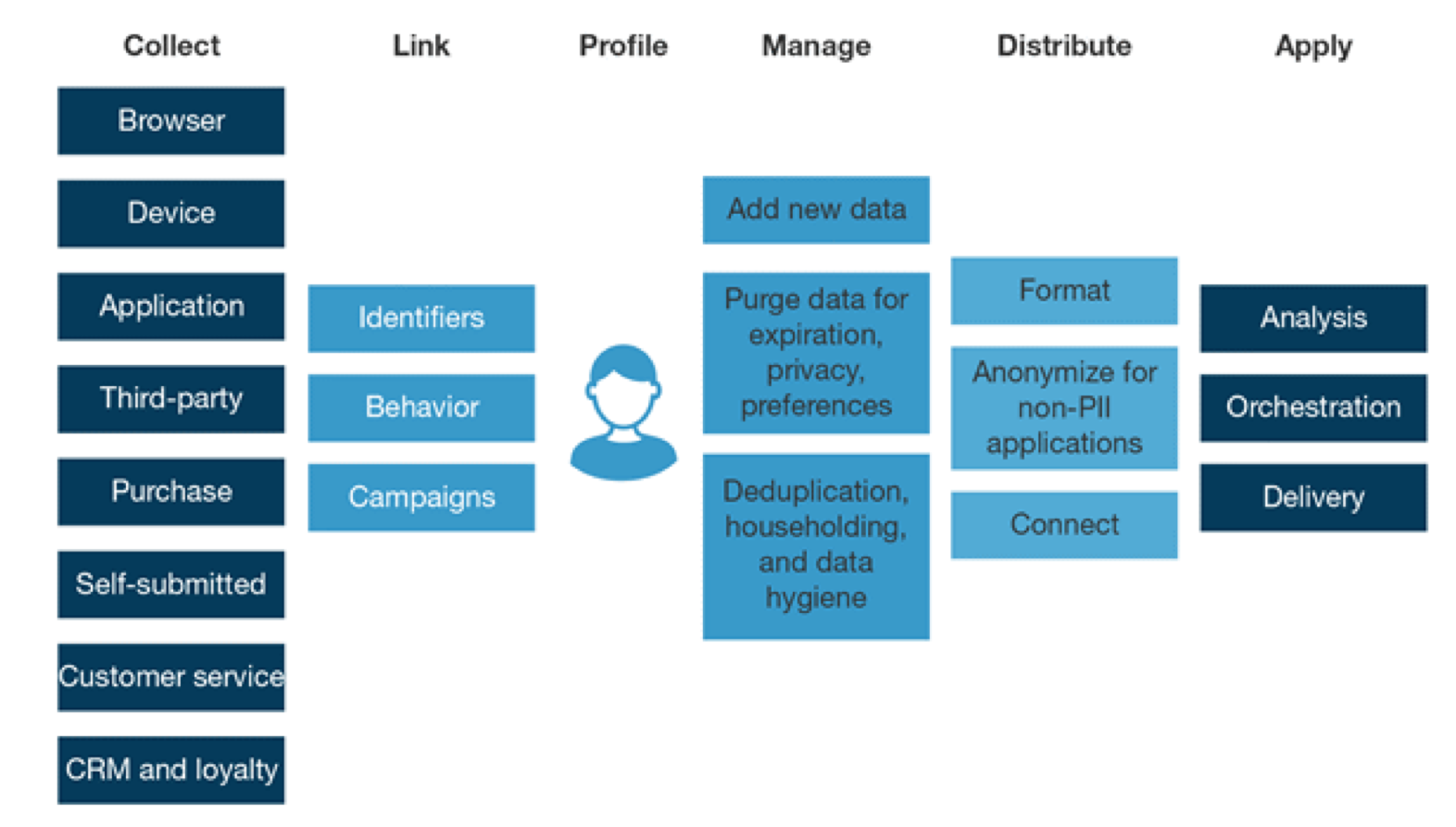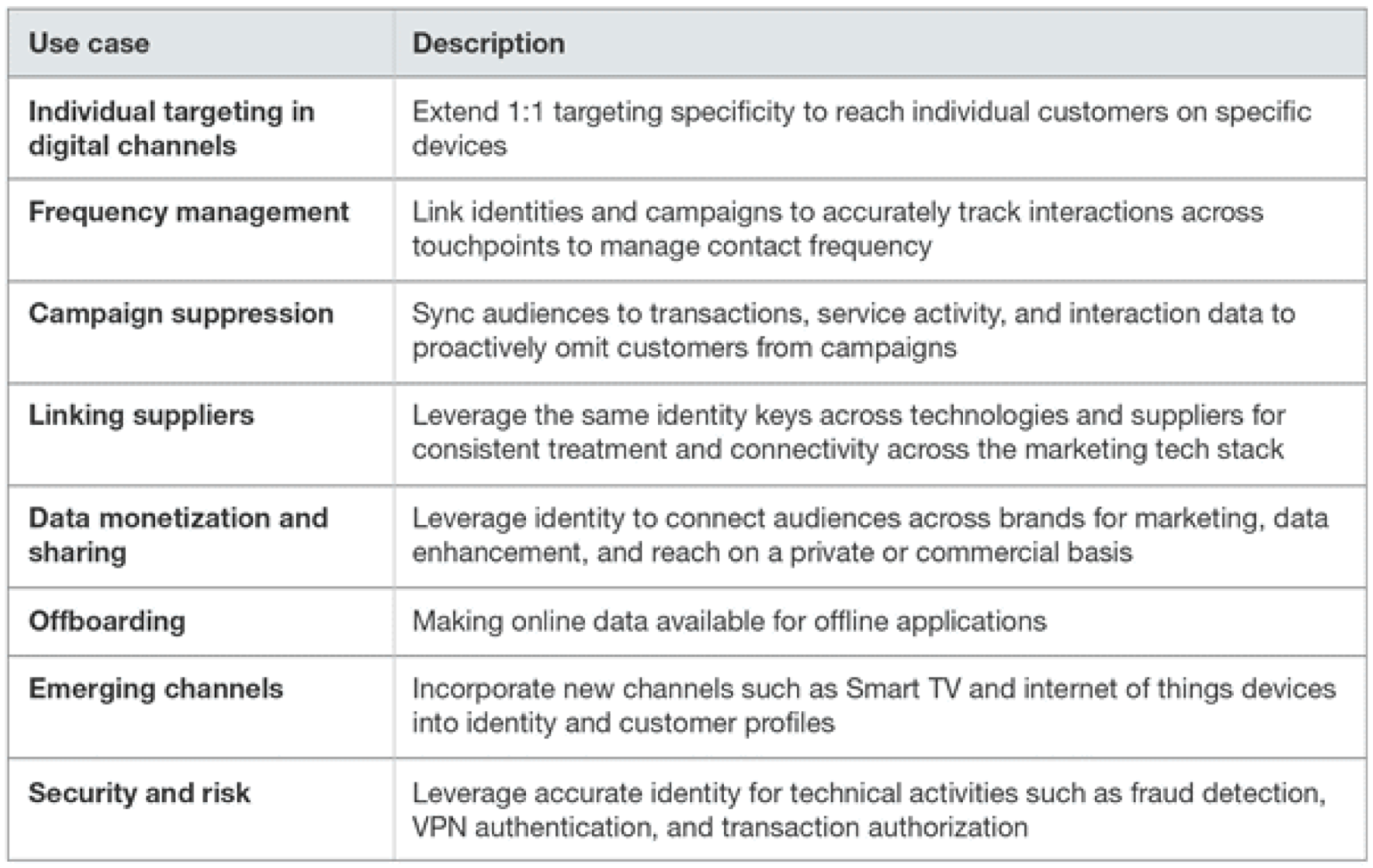- Data Services
- Fraud Prevention
- Solutions
- Resources
- About Us
- Login
- Talk to an expert
- Try us for free
Apr 26, 2017 | 3 min read

 New techniques and methodologies are constantly emerging in the world of data-driven marketing. And as a trusted partner of innovative brands across the United States, we at TowerData make it a point to stay up-to-date on the latest strategies.
New techniques and methodologies are constantly emerging in the world of data-driven marketing. And as a trusted partner of innovative brands across the United States, we at TowerData make it a point to stay up-to-date on the latest strategies.
Last month I attended RampUp 2017 where Joe Stanhope, VP and Principal Analyst at Forrester, gave a presentation on a core capability of TowerData’s that has more recently become a hot topic in the industry: identity resolution. Stanhope discussed the basics of identity resolution, including how it offers marketers more profound consumer insights and empowers them to enhance the cross-channel customer experience.
Here are a few highlights from Stanhope’s talk.
According to Stanhope, “Identity resolution is the process of integrating 1) individual identifiers across available touchpoints and devices, and 2) behavior, transaction and contextual information into a cohesive and addressable consumer profile for marketing analysis, orchestration and delivery.”
As shown in the diagram below, there are many forms of identity, with varying degrees of resolution, which marketers will encounter as they interact with customers and prospects.

Source: “The Strategic Role of Identity Resolution” (Forrester)
Identity resolution allows marketers to identify the many interactions an individual has with a brand on various channels and then tie each of these interactions back to that single user. Once these connections are made, marketers can better understand how their messaging on one channel impacts the user’s behavior on other channels.
With this information, they can build more accurate attribution models that allow them to determine where their efforts should be focused as well as develop powerful data-driven, cross-channel marketing strategies.
Here are three steps to get the ball rolling on identity resolution.
1. Choose and collect identification keys.
Though marketers have access to a large volume of different types of data, not every data point is needed to achieve every objective. The first step to building an identity resolution strategy is to determine which “identification keys” are meaningful for your business and should be collected. Identification keys could be an email address, a device ID, a session cookie, phone number or a postal address, to name a few.
A brand must first determine its business goals before it can focus on identification keys.. For example, if a brand is interested in understanding the relationship between its mobile marketing and a user’s e-commerce shopping behavior, it makes sense to track mobile device IDs, cookies and email addresses.
Gathering the appropriate identification keys and making connections between them allows marketers to properly build customer profiles, which is the next step in the process.
2. Build and manage customer profiles.
Build a customer profile by combining identification keys and descriptive consumer information, such as browser, device, purchase history and self-submitted data. Then link this information to the individual identity data as well as behavioral data to create a comprehensive view of the customer.
From there, add new data to the profile, purge data that is outdated or must be removed due to privacy and user preferences and remove duplicated information from the database. Note: This is an ongoing process.

Source: “The Strategic Role of Identity Resolution” (Forrester)
3. Maintain data accuracy and security.
Data sources, identification keys and even the consumers themselves change constantly. Thus, marketers must be vigilant about tracking and validating their data. They must take data stewardship seriously and regularly verify the accuracy of the information they’ve collected since it directly impacts marketing efficacy.
Additionally, marketers must ensure their database is secure and all customer information is properly protected. Failure to prevent unauthorized access to proprietary information not only torpedos a brand’s marketing but is also a PR nightmare.
The most important takeaway is that identity resolution is not simply about collecting data and building customer profiles. Rather, identity resolution is a powerful tool marketers can use 1) connect multiple sources of identity and consumer information, 2) put this information into context and 3) deliver positive, relevant cross-channel customer experiences. And not only does this process provide immediate benefits to marketers, but Stanhope identified eight potential future applications of identity resolution:

Source: “The Strategic Role of Identity Resolution” (Forrester)
Think about where identity resolution fits into your business. Is it a core capability to be developed or can leveraging the services of companies like TowerData help you meet your marketing objectives?
Start collecting the data you need to connect customer identities across channels. Request your free Email Intelligence match report now.